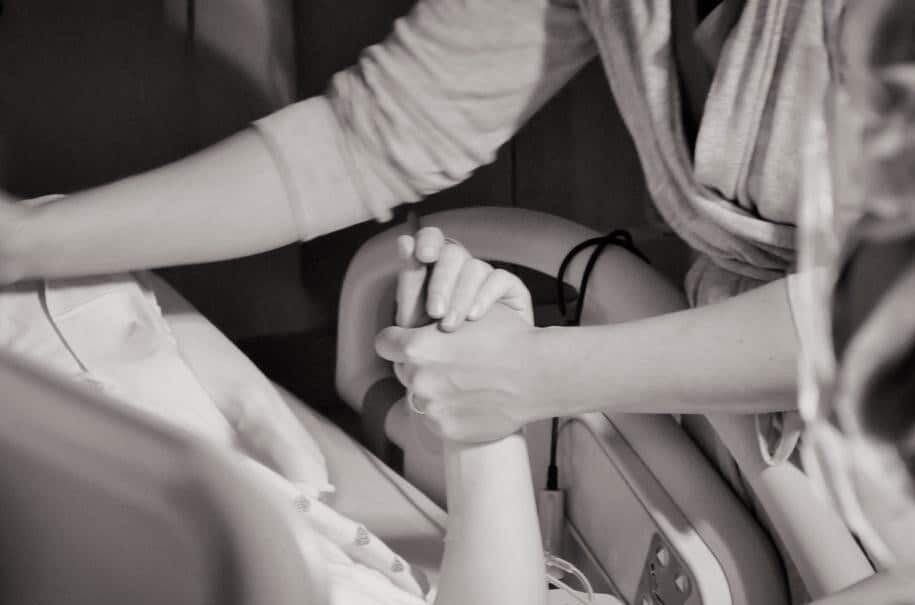What is a doula?
Birth Doulas are trained labor companions. They provide continuous physical and emotional support throughout labor and delivery. Doulas also provide emotional and informational support as needed during the prenatal and postpartum periods. Doulas do not perform medical tasks, make decisions for their clients, or let their own preferences and opinions interfere with a client’s choices. A doula’s primary role is to assist clients in achieving a safe and satisfying birth experience, no matter what that means to them.
This personalized, continuous, and non-judgmental support has proven to lower the rate of interventions such as cesarean sections, epidurals, and Pitocin. On average, laboring people who have doulas have a shorter labor and are more likely to have positive feelings about their birth experience.
Research shows that overall, people who have continuous support during childbirth experience a:
25% decrease in the risk of Cesarean
8% increase in the likelihood of a spontaneous vaginal birth
10% decrease in the use of any medications for pain relief
Shorter labors by 41 minutes on average
38% decrease in the baby’s risk of a low five minute Apgar score
31% decrease in the risk of being dissatisfied with the birth experience
What We do:
Physical support is important because it helps the birthing person maintain a sense of comfort, control, and confidence:
Soothing with touch through the use of massage, counter pressure, or a rebozo
Helping to create a calm environment
Assisting with water therapy (shower, tub)
Applying warmth or cold
Giving ice chips, food, and drinks (hydration is key!)
Informational support helps keep the birthing person and their partner informed about what’s going on with the course of labor, as well as provides them with access to evidence-based information about birth options:
Guiding the birthing person and their partner through labor
Suggesting techniques in labor, such as breathing, relaxation techniques, movement, and positioning (both with and without epidurals)
Helping them find evidence-based information about different options in pregnancy and childbirth
Helping explain medical procedures before or as they occur
Helping the partner understand what’s going on with their loved one’s labor (for example, interpreting the different sounds the birthing person makes)
Emotional support helps the birthing person feel cared for and feel a sense of pride and empowerment after birth. One of the doula’s primary goals is to care for the mother’s emotional health and enhance her ability to have positive birth memories:
Reassurance
Encouragement
Praise
Helping the birthing person see themselves or their situation more positively
Keeping company
Showing a caring attitude
Mirroring—calmly describing what the birthing person is experiencing and echoing back the same feelings and intensity
Helping the birthing person and partner work through fears and self-doubt
Debriefing after the birth—listening to the mother with empathy
Advocacy is defined as supporting the birthing person in their right to make decisions about their own body and baby. It does not include speaking on behalf of the client.
Encouraging the birthing person or their partner to ask questions and verbalize their preferences
Asking the birthing person what they want
Supporting the birthing person’s decision
Amplifying the mother’s voice if she is being dismissed, ignored, or not heard, “Excuse me, she’s trying to tell you something. I wasn’t sure if you heard her or not.”
Creating space and time for the birthing family so that they can ask questions, gather evidence-based information, and make decisions without feeling pressured
Facilitating communication between the parents and care providers
If a birthing person is not aware that a provider is about to perform an intervention, the doula could point out what it appears the nurse or physician is about to do, and ask the birthing person if they have any questions about what is about to happen. For example, if it looks like the provider is about to perform an episiotomy without the person’s consent: “Dr. Smith has scissors in his hand. Do you have any questions about what he is wanting to do with the scissors?”
What we do not do:
Doulas are not medical professionals, and the following tasks are not performed by doulas:
They do not perform clinical tasks such as vaginal exams or fetal heart monitoring
They do not give medical advice or diagnose conditions
They do not make decisions for the client (medical or otherwise)
They do not pressure the birthing person into certain choices just because that’s what they prefer
They do not take over the role of the partner
They do not catch the baby
They do not change shifts as nurses do (although longer births may require a back-up after 24 hours)
source: Rebecca Dekker, PhD, RN. (2019). “Evidence On: Doulas”. Evidence Based Birth (2018).



